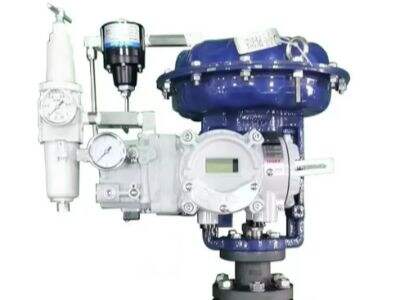वाल्वहरू गेटकीपरजस्तै हुन्। त्यो यन्त्रको निश्चित भागमा तरल, गैस र अन्य चीजहरूको प्रवाह नियन्त्रण गर्दछ। एक वाल्वलाई दरबारूलाई रूपमा सोच्नुहोस्। मानिसहरू खुलेको दरबारूदेखि प्रवेश गर्न सक्छन्, तर जब दरबारू बन्द भएमा कसैले पनि प्रवेश गर्न सक्दैन। उसै प्रकार, Xiyena खुलेमा तरल वा गैसलाई यन्त्रमा पार गराउँछ र बन्द भएमा पार नहुन्छ।
वाल्वहरूका प्रकारहरू
आज हामी चतुर्थांश-कोण रोटेटरी वाल्व र बॉल वाल्वबारेमा चर्चा गर्दैछौं। यो रोटेटरी वाल्व विभिन्न उद्योगहरूमा विभिन्न कामहरूको लागि विभिन्न रूपहरू र उपयोगहरू सँग आउँछ।
चौथाई-कोण रोटरी वाल्वहरूमा एक गोलाकार डिस्क भित्री आर्किटेक्चरिक संरचनामा फिट हुन्छ। यस डिस्कले थर्ने दर मा, जस्तै कि डर पन्ना घुमाउन, तरल पदार्थ वा बायुको प्रवाह नियन्त्रण गर्न सक्छ। जबकि बॉल वाल्वहरूमा भित्री एक बॉल राखिएको छ जसलाई पनि घुमाउन सकिन्छ। जब यो बॉल घुम्दछ त्यसपछि तरल पदार्थ वा बायुको मार्ग खोलिन्छ वा बन्द गर्दछ। ठिक त्यसैगरि जस्तै बॉल घुम्न सक्छ त्यसैगरि पनि प्रवेश रोक्न सक्छ वा अनुमति दिन सक्छ। दुवै वाल्वहरूका फाइदा र तकलीफहरू
भाग्य सँग, यीसबै वाल्व प्रकारहरूले तिनीहरूको लागि केही फाइदाहरू र दोषहरू छन्। चलो फेरि प्रत्येक वाल्वको बारेमा थप गहिरो समझौ।
यी चौथाई-कोण रोटरी वाल्वहरू दृढ छन् र उच्च तापमान र उच्च दबावसहित विरोध गर्न सक्छन्।
यी Xiyena गोलाकार वैल्वहरू थाहिर पर्ने लागि बनाइएका छन्, र वे सबैभन्दा कठोर पर्यावरणमा पनि समयको परीक्षण पार गरेका छन्। यी वैल्वहरूको एक अद्भुत विशेषता यो हो कि तिनीहरू स्वयं पाको छन्। यसको अर्थ हो कि तिनीहरूलाई फरक वैल्वहरूभन्दा कम भन्दा पाको आवश्यकता पर्दछ, जसले यसलाई गर्न जुट्याउने समय र प्रयासको बचत गर्दछ। तथापि, तिनीहरू गोलाकार वैल्वभन्दा महँगा हुन्छन्, त्यसो भए कम बजेटका लागि यो ठिक विकल्प होइन। बजारमा, चौथाई-कोणीय घूर्णन वैल्वहरू पनि उपलब्ध छन्।
अतिरिक्त जानकारी बॉल वैल्वसँग तुलना गर्दा महँगा हुन सक्छ। तिनीहरू पनि उपयोग गर्न आसान हुन्छ, जसले तिनीहरूको लोकप्रियतामा योगदान गर्दछ। बॉल वैल्वहरू ठूलो सिल प्रदान गर्छ, जसका कारण भने वैल्व बन्द भएको भन्दा केही अवाञ्छित चीजहरू पार नहुन। यो सान्द्रता क्षेत्रहरूमा बिशेष रूपमा आवश्यक छ, जहाँ तपाईं सफाई र सुरक्षा बनाउन चाहानुहुन्छ। तर बॉल वैल्वहरूको शक्ति चतुर्थ-कोणीय घूर्णनीय वैल्वहरूको शक्तिको तुलना मा बढी छैन। तिनीहरूलाई राम्रै फलन गर्न गर्न धेरै सावधानी र खात्रीको आवश्यकता पर्दछ, जसले केही उपयोगकर्ताहरूलाई निराश गर्न सक्छ। तिनीहरू कहाँ प्रयोग गरिन्छ? चतुर्थ कोण र बॉल वैल्वहरू विशेष क्षेत्रहरूमा विशेष उद्योगहरूको लागि प्रयोग गरिन्छ।
चतुर्थ-कोणीय घूर्णनीय वैल्वहरूको उपयोग तेल र गैस, रसायनिक, र खाद्य उद्योगहरूमा बहुत लोकप्रिय छ। यी उद्योगहरू उच्च-दबाव र गर्मीको स्थितिमा संभाल्न सक्ने एक वैल्वको आवश्यकता छ। तिनीहरूलाई यसलाई बिशेष स्थितिमा सुरक्षित रूपमा काम गर्ने वैल्वहरूको आवश्यकता छ। र यही चतुर्थ-कोणीय घूर्णनीय वैल्वहरूको सुन्दरताको ठाउँ छ।
र बॉल वैल्वहरू पानीको उपचार प्रक्रियामा, गर्मी र ठन्डाको सिस्टममा, र प्लंबिंग उद्योगमा बढी उपयोग गरिन्छ। यी प्रक्रियाहरूले जित्ने दबाव र मात्रा गर्मी जित्ने चाहिए त्यो बलिष्ठ छैन। बॉल वैल्वहरूले यी सेवाहरूमा कुशलतापूर्वक काम गर्दछनि र सेवामा धेरै पैसा बचाउँछनि।
कुन र अधिक समय बाट्छ र सस्तै
चार्टर अन्गल रोटरी वैल्व वा बॉल वैल्वमध्ये चयन गर्दैमा निम्न गर्दैमा महत्वपूर्ण कारकहरूलाई ध्यानमा राख्नुहोस्: यसको थायभाबी र मूल्य।
यी चार्टर-अन्गल रोटरी वैल्वभन्दा बढी समय बाट्छन्। यी बॉल वैल्वभन्दा बढी मजबूत हुन सक्छन्, र त्यसो भएपनि बढी कठोर परिस्थितिहरू सह्न सक्छन्। यी मजबूत छन्, धेरै बार बदल्न सकिदैनन्, र यद्यपि आफ्नो पहिलो मूल्यमा थोडा धेरै खर्च गर्नु पर्दछ, दीर्घकालमा तपाईं बचत गर्न सक्छन्।
 EN
EN
 AR
AR
 CS
CS
 FR
FR
 HI
HI
 KO
KO
 PL
PL
 PT
PT
 RO
RO
 RU
RU
 ES
ES
 TL
TL
 IW
IW
 ID
ID
 LT
LT
 SR
SR
 SL
SL
 UK
UK
 VI
VI
 ET
ET
 HU
HU
 TH
TH
 TR
TR
 FA
FA
 MS
MS
 UR
UR
 BN
BN
 JW
JW
 MN
MN
 NE
NE
 TA
TA
 MY
MY
 KK
KK
 UZ
UZ
 KY
KY



